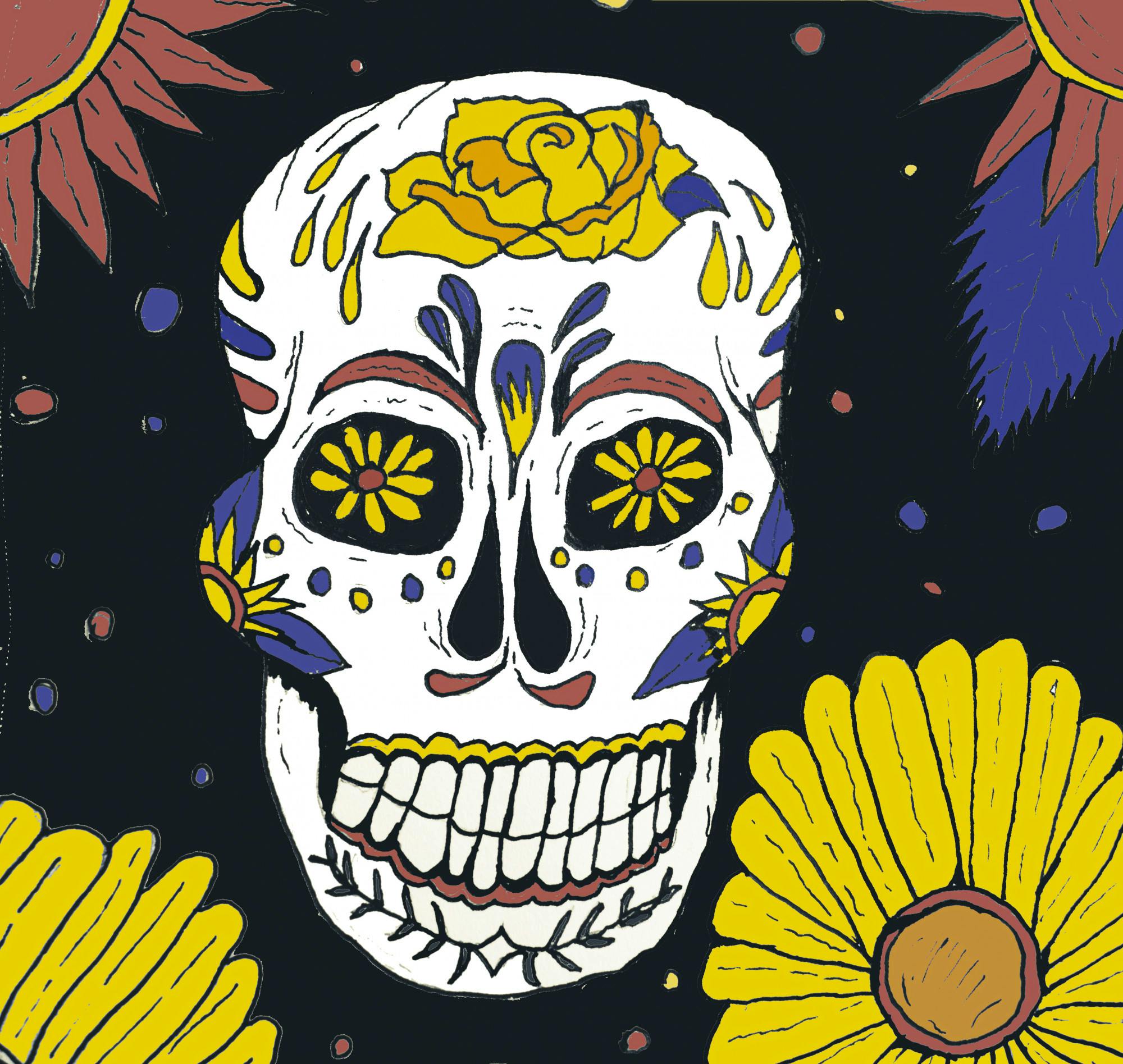Sigma Delta Pi, la sociedad hispana de honores de la Universidad de Ohio, organizó una celebración con comida, artes y manualidades y información sobre cómo se celebran la fiesta en diferentes países latinoamericanos.
El Día de Los Muertos se celebra el 1 y 2 de noviembre y “reúne a los vivos y muertos,” según Day of the Dead, o DOTD, un sitio de web dedicado a compatir información sobre todas las tradiciones de la fiesta.
Diana Marysol Contreras Licea es la editora de Sigma Delta Pi y una estudiante postgrado de la Universidad de Ohio que estudia Español y literatura. Marysol Contreras Licea es de México y explicó a los estudiantes por qué el Día de Los Muertos se celebra cada año.
La fiesta se celebra predominantemente en México, pero también en otros países latinoamericanos. Cada país tiene sus propias tradiciones únicas para el Día de Los Muertos.
“El Día de Los Muertos es una tradición prehispánica,” dijo Marysol Contreras Licea. “Y donde se piensa que las personas que murieron en el pasado pueden venir a visitar a su familia en la tierra.”
El Día de Los Muertos se originó cuando los conquistadores españoles llegaron a México y “introdujeron” el catolicismo y “tradiciones y creencias” se mezclaron “para crear sus propias costumbres,” dijo el DOTD.
No hay luto durante el Día de Los Muertos. La fiesta es el tiempo de celebrar el viaje de regreso de su familia a la tierra.
“El uno de noviembre es el Día de Los Santos y el dos de noviembre es el Día de Los Fieles Difuntos,” dijo Marysol Contreras Licea.
El primer día de noviembre, el día está dedicado a los niños que murieron, dijo Marysol Contreras Licea, y el segundo día de noviembre es el día para los adultos.
Julio Beltrán, un alumno de OU y actual profesor de apoyo, es de Ecuador y discutió las tradiciones ahí. La celebración, en Ecuador, se llama el Día de los Difuntos y las costumbres difieren de las costumbres de México.
“Comemos dos platos,” dijo Beltrán. “La colada morada que es una bebida hecha con harina de maíz morado y tiene otros ingredientes como el mortiño o la piña o el ishpingo.”
La bebida tiene una constancia espesa y es morado brillante. Mortiño y ishpingo son un tipo de baya y hierba que le da color y sabor a la bebida.
El otro plato se llama “guaguas de pan,” y la palabra “guagua” es Quechua para “bebé.” La comida está hecha de pan dulce que se parece a bebés y muñecas. La comida está decorada con colores brillantes.
En Ecuador durante el Día de Los Difuntos en el segundo de noviembre las personas van a los cementerios de sus miembros de la familia y les pagan homenaje.
Y en México, el Día de los Muertos se celebra con un altar conocido como la ofrenda. La ofrenda “es una colección de ofrendas dedicadas a la persona que está honrada,” dijo el DOTD.
En la base de la ofrenda es donde se colocan las ofrendas. Las ofrendas incluyen las cosas que un miembro de la familia disfrutó mientras estaban vivos y la comida tradicional mexicana. En la cima de la ofrenda hay fotos de los miembros de la familia que están difuntos y otras cosas personales de esos miembros.
Las calaveras son símbolos importantes durante el Día de los Muertos. Según el DOTD, las personas hacen calaveras de azúcar y barro y las pintan en sus caras. “Las calaveras a menudo se dibujan con una sonrisa como para reírse de la muerte,” dijo el DOTD.
La Diosa Mictecacihuatl, la regla de la otra vida, fue adorada por los Aztecas y fue representada como un esqueleto, según el DOTD. Otras culturas precolombinas usaban las calaveras y los esqueletos como ofrendas a los dioses también.
Las flores de Marigold se colocan en la ofrenda y en los cementerios durante el Día de los Muertos porque sus colores brillantes y fuerte olor ayudan a guiar a los espíritus de regreso a la Tierra.
La habilidad de aprender sobre diferentes culturas latinoamericanas es la razón por qué Caroline Rhude, el vicepresidente de Sigma Delta Pi y un tercer año estudiando Español y trabajo social, juntó la sociedad de honores.
“Tenemos muchos estudiantes internacionales y estudiantes actuales y postgrado que son de esos países específicos,” dijo Rhude. “Así que no solo es una manera de ayudar a otros a aprender sobre (sus culturas) pero podemos permitirles que tomen las riendas.”
Marysol Contreras Licea dijo que mientras está en Ohio, el Día de los Muertos no deja su lado.
“Siento que mis posiciones se quedaron conmigo no importa donde estoy,” dijo Marysol Contreras Licea. “Y también diría que es la celebración mexicana más importante.”

